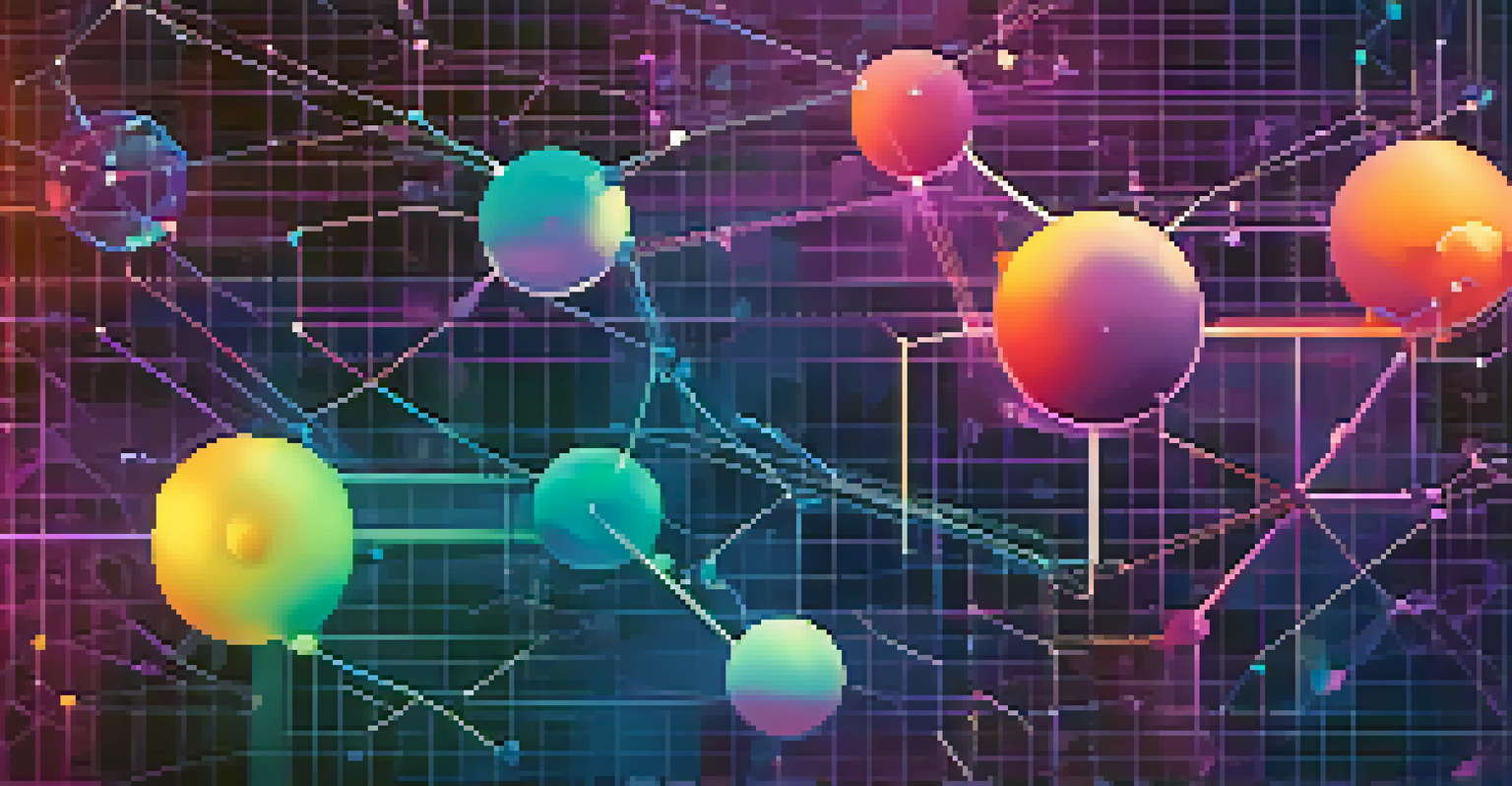Interchain Communication: Bridging Ethereum and Other Chains

Understanding Interchain Communication and Its Importance
Interchain communication refers to the methods and protocols that allow different blockchain networks to interact and share data. Imagine it as a universal language that enables these chains to talk to one another, much like how people from different countries use English to communicate. This functionality is crucial as it enhances the interoperability of blockchain systems, allowing for more seamless transactions and collaboration across platforms.
Interoperability is the key to the future of blockchain technology. Without it, we risk creating an ecosystem of silos that limit innovation.
As the blockchain ecosystem grows, the need for different chains to communicate becomes increasingly vital. For instance, a decentralized application (DApp) built on Ethereum could benefit from data or assets located on another chain, such as Binance Smart Chain or Polkadot. This ability to connect various networks not only boosts efficiency but also enriches the user experience by providing more options and features.
Moreover, interchain communication can help to mitigate the limitations of individual blockchains. By enabling access to a wider range of resources and functionalities, it fosters innovation and the development of more complex applications. Ultimately, this interconnectedness is what drives the evolution of decentralized technologies.
Key Protocols Enabling Interchain Communication
Several protocols are emerging to facilitate interchain communication, each with its unique approach and advantages. One of the most well-known protocols is the Inter-Blockchain Communication (IBC) protocol, which is utilized by the Cosmos network. IBC allows different blockchains within the Cosmos ecosystem to exchange data and tokens securely, pioneering the concept of interconnected chains.

Another significant player in this space is the Polkadot network, which employs a unique architecture of parachains and a central relay chain. This structure allows various blockchains to operate independently while communicating with one another through the relay chain. This method enhances scalability and flexibility, making it easier for developers to create specialized chains that can still interact with others.
Interchain Communication Explained
Interchain communication enables different blockchain networks to interact and share data, enhancing interoperability.
Ethereum, too, is exploring ways to enable interchain communication. With the introduction of Ethereum 2.0 and its sharding mechanism, the potential for enhanced cross-chain interactions is on the horizon. This shift not only aims to improve scalability but also prepares Ethereum for a more interconnected future with other blockchain networks.
Real-World Applications of Interchain Communication
Interchain communication opens up a world of possibilities for real-world applications. For example, decentralized finance (DeFi) platforms can leverage assets from multiple blockchains to create liquidity pools that are more diverse and robust. This not only attracts a broader user base but also enhances the overall stability of the DeFi ecosystem.
The real power of blockchain comes from its ability to work together, connecting disparate systems and creating a unified, decentralized future.
In gaming, interchain communication allows for cross-platform asset transfers, enabling players to use their in-game items across different games or platforms. Imagine being able to use the same sword you earned in one game while playing another; it transforms the gaming experience and adds value to digital assets.
Moreover, supply chain management can benefit immensely from this technology. By connecting different blockchain networks, businesses can track the movement of goods more transparently and efficiently. This interconnectedness can lead to improved trust and verification in supply chains, ultimately enhancing overall resilience.
Challenges in Implementing Interchain Communication
Despite its potential, interchain communication faces several challenges that need to be addressed. One of the most significant hurdles is the lack of standardization across different blockchain protocols. Every chain has its unique structure and consensus mechanisms, which can complicate the development of universal communication protocols.
Security is another pressing concern. The more interconnected the systems become, the greater the risk of vulnerabilities and attacks. Ensuring secure data transmission and safeguarding against potential exploits is critical to building trust in interchain communication solutions.
Emerging Protocols in Interchain
Protocols like IBC and Polkadot's architecture facilitate secure and efficient communication between blockchains.
Lastly, scalability issues can arise as the number of transactions and interactions between chains increase. As more users and applications leverage interchain communication, it’s essential to develop robust infrastructure capable of handling this growth without compromising performance.
The Role of Developers in Interchain Communication
Developers play a pivotal role in the advancement of interchain communication. They are the innovators who design and implement the protocols that enable different blockchains to interact effectively. Their expertise and creativity are essential for overcoming the technical challenges that arise in this complex landscape.
Moreover, developers are responsible for educating the broader community about the advantages of interchain communication. By sharing knowledge and resources, they can help users understand how to leverage these interconnected technologies for their benefit. This community-driven approach fosters collaboration and accelerates the adoption of interchain solutions.
As the demand for interconnected blockchain solutions grows, developers will need to stay ahead of the curve by continuously learning and adapting. This commitment to growth will not only enhance their skills but also contribute to the overall evolution of the blockchain ecosystem, paving the way for innovative applications.
Future Trends in Interchain Communication
The future of interchain communication looks promising, with several trends already emerging. One such trend is the increasing use of cross-chain decentralized exchanges (DEXs), which allow users to trade assets from different blockchains seamlessly. This evolution can lead to more liquidity and a broader market for digital assets, benefiting traders and investors alike.
Another trend is the rise of multi-chain ecosystems that prioritize interoperability. Projects like Cosmos and Polkadot are leading the way, demonstrating how interconnected networks can enhance scalability and user experience. As more developers adopt these models, we can expect to see a surge in applications that capitalize on interchain capabilities.
Real-World Impact of Interchain
Interchain communication benefits various sectors, including DeFi, gaming, and supply chain management, by promoting seamless asset transfers.
Finally, the integration of artificial intelligence (AI) with interchain communication is on the horizon. By leveraging AI, developers can create smarter, more efficient protocols that can adapt to changing conditions and user needs. This combination of technologies has the potential to revolutionize the way blockchain networks interact, making them more responsive and user-friendly.
Conclusion: The Path Ahead for Interchain Communication
Interchain communication is set to play a vital role in the future of blockchain technology. By enabling seamless interactions between different networks, it fosters innovation and expands the possibilities for decentralized applications. The journey towards a more interconnected blockchain ecosystem is just beginning, and the potential is enormous.
As we move forward, addressing the challenges of standardization, security, and scalability will be crucial. The collaboration of developers, businesses, and users will help pave the way for effective solutions that enhance the interchain landscape. Together, they can create a vibrant and robust interconnected ecosystem.

In essence, interchain communication not only bridges the gaps between blockchain networks but also shapes the future of decentralized technology. By embracing this evolution, we can look forward to a more inclusive and dynamic blockchain environment that benefits everyone involved.